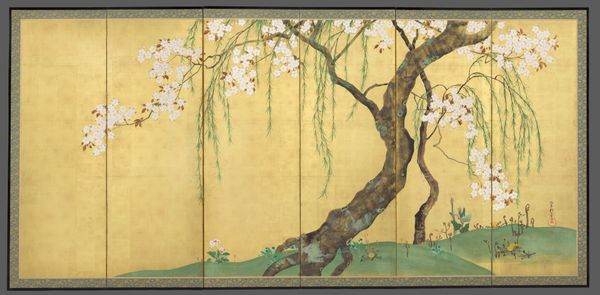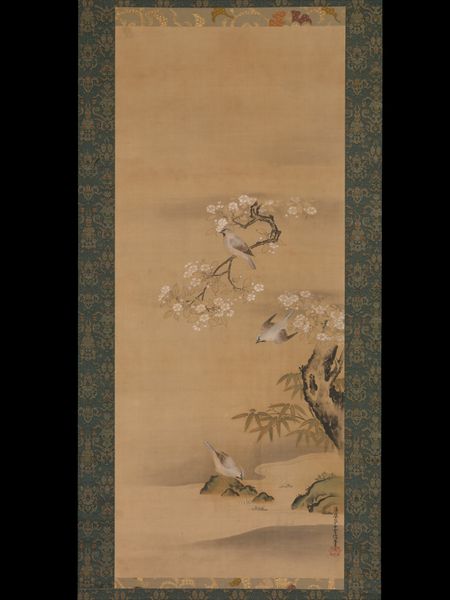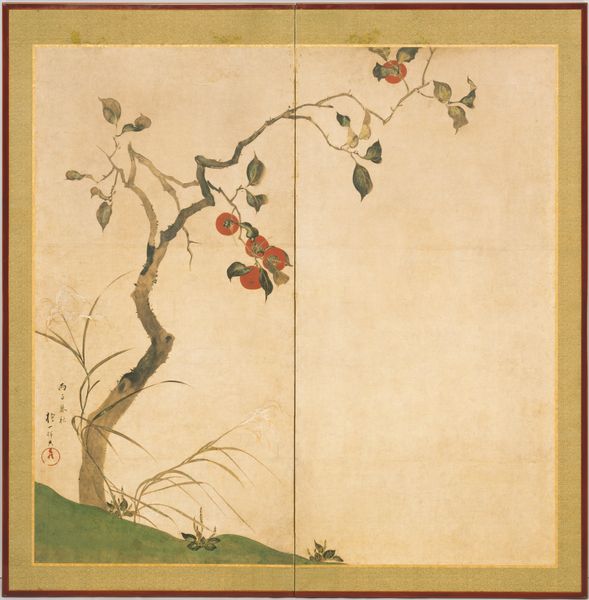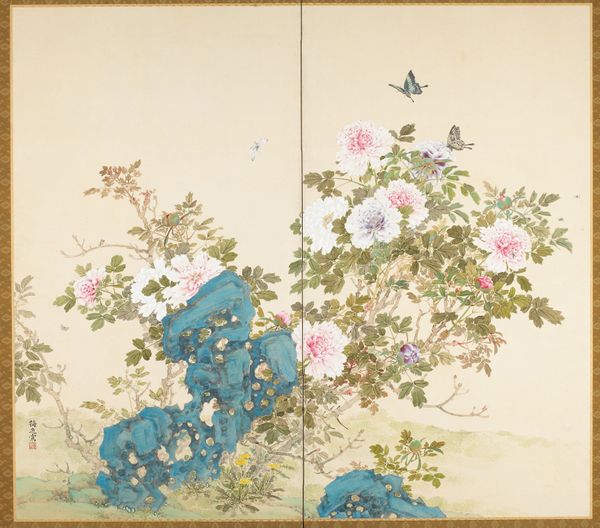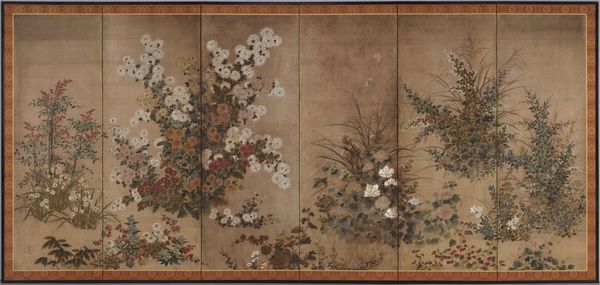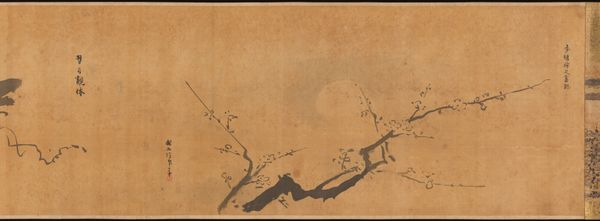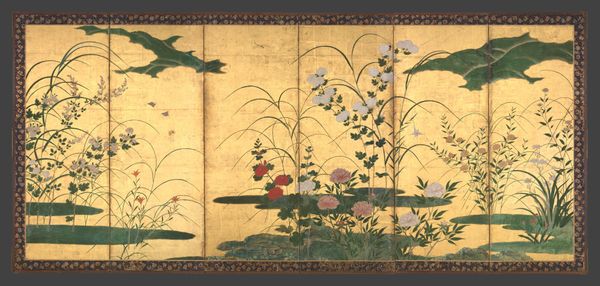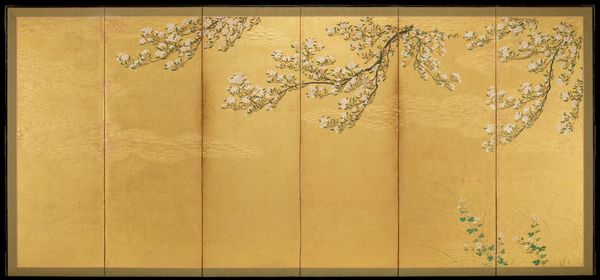![Plum Trees [right of a pair of Plum Trees and Hollyhocks] by Ogata Kenzan 尾形乾山](/_next/image?url=https%3A%2F%2Fd2w8kbdekdi1gv.cloudfront.net%2FeyJidWNrZXQiOiAiYXJ0ZXJhLWltYWdlcy1idWNrZXQiLCAia2V5IjogImFydHdvcmtzLzQ4ZjJiNTA2LTk3YmQtNGE0Ni1iOTc3LWUyY2JlMjlmYjUzNS80OGYyYjUwNi05N2JkLTRhNDYtYjk3Ny1lMmNiZTI5ZmI1MzVfZnVsbC5qcGciLCAiZWRpdHMiOiB7InJlc2l6ZSI6IHsid2lkdGgiOiAxOTIwLCAiaGVpZ2h0IjogMTkyMCwgImZpdCI6ICJpbnNpZGUifX19&w=3840&q=75)
Plum Trees [right of a pair of Plum Trees and Hollyhocks] c. 18th century
0:00
0:00
painting, watercolor
#
painting
#
asian-art
#
landscape
#
watercolor
#
orientalism
Dimensions: 43 5/8 × 113 5/8 in. (110.81 × 288.61 cm) (image)44 7/8 × 115 1/8 × 5/8 in. (113.98 × 292.42 × 1.59 cm)
Copyright: Public Domain
This is "Plum Trees," a section of a screen by Ogata Kenzan, made with ink and color on gold leaf. The dominant visual experience comes from the contrast between the metallic gold background and the delicate, linear branches of the plum trees. Kenzan uses asymmetrical composition to guide the viewer's eye, starting from the left with sparse branches, and moving towards the right, where a fuller tree anchors the composition. The subtle gradations in the gold leaf create a sense of depth, while the carefully placed blossoms add touches of color that soften the metallic surface. This interplay between flatness and depth, line and color, echoes traditional Japanese aesthetics, which emphasizes harmony and balance. The screen's function is not only decorative but also philosophical. The plum blossoms, symbols of resilience and renewal, stand out against the opulence of the gold, creating a tension between natural simplicity and constructed artifice. The linear arrangement of the plum branches and the calculated distribution of the flowers work in tandem to destabilize fixed notions of beauty, engaging us in a dynamic process of interpretation and reinterpretation.
Comments
minneapolisinstituteofart almost 2 years ago
⋮
Ogata Kenzan is best known as a potter, but he was also a successful painter, especially after moving from Kyoto to Edo in his late sixties. Kenzan was the younger brother of painter Ogata Kōrin, from whom the decorative Rinpa school takes its name—rin from Kōrin paired with pa, meaning “school.” On a ground of gold leaf, Kenzan presents red and white camellias blooming on a small hillock below a large plum tree at right and, at left, pink, white, and red hollyhocks. With this placement of the motifs, Kenzan turned the folded surface of the screen into a vital component of the composition.
Join the conversation
Join millions of artists and users on Artera today and experience the ultimate creative platform.
